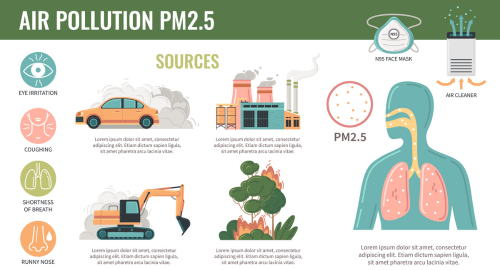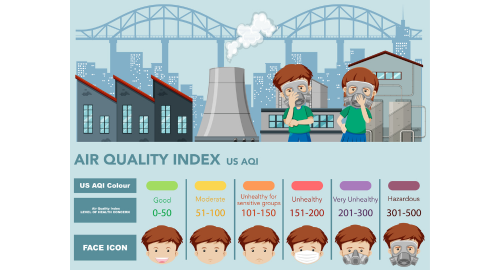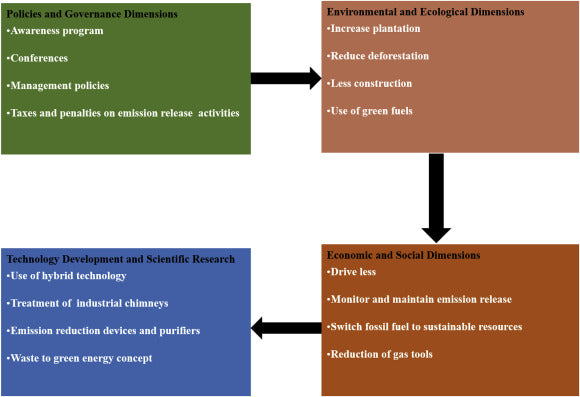Recent Articles
-
Nothing Smartphones in Pakistan June 28, 2025
-
Galaxy Unpacked July 2024: A Closer Look at Samsung’s Upcoming Product Launches June 25, 2024
-
IPadOS 18: AI-Powered Calculator, Smart Script, and More June 11, 2024
Breathe Easy: Essential Precautions to Protect Yourself from Smog
Contents
Understanding Smog and Its Impacts
Staying Informed About Air Quality
Understanding AQI Ratings and Their Implications

It's more important than ever to learn how to shield ourselves from the damaging effects of smog, which is increasingly affecting urban areas. The purpose of this blog post is to provide you practical tips for reducing the health hazards that come with exposure to smog.
Understanding Smog and Its Impacts
Smog is a sort of air pollution that is mostly caused by automobile emissions, industrial processes, and chemical reactions in the atmosphere. It is a mixture of smoke and fog. Long-term smog exposure may intensify asthma symptoms, cause respiratory disorders, and potentially worsen cardiovascular conditions.
Preventive Measures at Home
Your home's safety may serve as your first barrier of protection from smog. Here's how to maintain the purest indoor air possible:
- Air Purifiers: To lessen indoor pollution, get a decent air purifier, preferably one with HEPA filters.
- Seal Windows and Doors: To stop outside smog from entering your home, make sure your windows and doors are tightly sealed.
- Preserve Indoor Air Quality: Consider indoor plants that can help filter the air, use exhaust fans in bathrooms and kitchens, and refrain from smoking indoors.
Protecting Yourself Outdoors
Take these safety measures when going outside, particularly on days when there is a lot of smog:
- Limit outside Activities: When pollution levels are high, cut back on outside activity and activities.
- Protective Gear: To filter out pollutants, put on masks and safety glasses.
- Timing is Crucial: Schedule your outdoor activities for the early morning or late evening, when the amount of haze is usually lower.
Staying Informed About Air Quality
Staying informed about the quality of air around you is essential for protecting your health, particularly in areas where air pollution is a problem. A standardized method that provides data on air pollution levels in real time is the Air Quality Index (AQI). These updates are made available through a variety of apps and websites, which makes it simpler for people to obtain this information and decide what to do outside and what safety measures to take.
Understanding AQI Ratings and Their Implications

0-50 (Good): This is the ideal scenario, where the air quality is excellent, posing minimal or no health risk to the general population. In this range, outdoor activities can be safely enjoyed without special precautions.
51-100 (Moderate): While the air quality is still acceptable, individuals who are particularly sensitive to air pollutants, such as those with asthma, allergies, or chronic respiratory conditions, may start to experience discomfort or health issues. It's a good practice for these individuals to limit prolonged outdoor exertion and to monitor symptoms.
101-150 (Unhealthy for Sensitive Groups): At this level, the air quality is significantly degraded and can affect sensitive groups, which includes children, the elderly, and those with pre-existing lung or heart diseases. It's advisable for these individuals to reduce outdoor activities, particularly those that require heavy exertion. The general public is less likely to be affected but should be aware of changes in air quality.
151-200 (Unhealthy): This rating indicates a level of pollution that can have health implications for everyone, not just sensitive groups. Symptoms like difficulty in breathing, throat irritation, and decreased lung function may be experienced. It's recommended for everyone, especially sensitive groups, to limit outdoor exertion and stay indoors as much as possible.
201-300 (Very Unhealthy): In this range, the air quality poses serious health risks to all individuals. Symptoms can be more severe, including respiratory distress, exacerbation of heart and lung diseases, and significant discomfort to the general population. It's crucial to follow health advisories, stay indoors, and use air purifiers if available.
301-500 (Hazardous): This is the most severe level, indicating emergency conditions with air quality so poor that it poses serious health risks to the entire population. It's imperative to avoid all outdoor activities, adhere to public health advisories, and possibly evacuate the area if advised by authorities.
Taking Proactive Measures
In addition to understanding these ratings, it's critical to respond effectively by utilizing AQI projections. To reduce the dangers, schedule outside activities at times when the air quality index is lower, use masks made to filter pollutants, and install air purification systems at home. During days of heavy pollution, it is important for people with respiratory disorders to keep medication on hand and to consult healthcare experts for an action plan.
Community Involvement and Long-Term Solutions
Even though individual efforts are important, group efforts can result in long-term fixes. Take part in neighborhood campaigns to cut pollution, including carpooling or tree planting efforts. Speak up in favor of laws that will enhance the quality of the air, such as those that will force industries to limit their emissions and encourage green urban development.
Conclusion
Lastly, even if smog is becoming a bigger problem in many cities, you may greatly lower your risk of illness by being aware of the conditions of the air, taking the appropriate safety measures indoors and outside, and managing your exposure. Recall that addressing this environmental issue requires both communal and individual initiatives.



 Debit/Credit Cards Accepted
Debit/Credit Cards Accepted